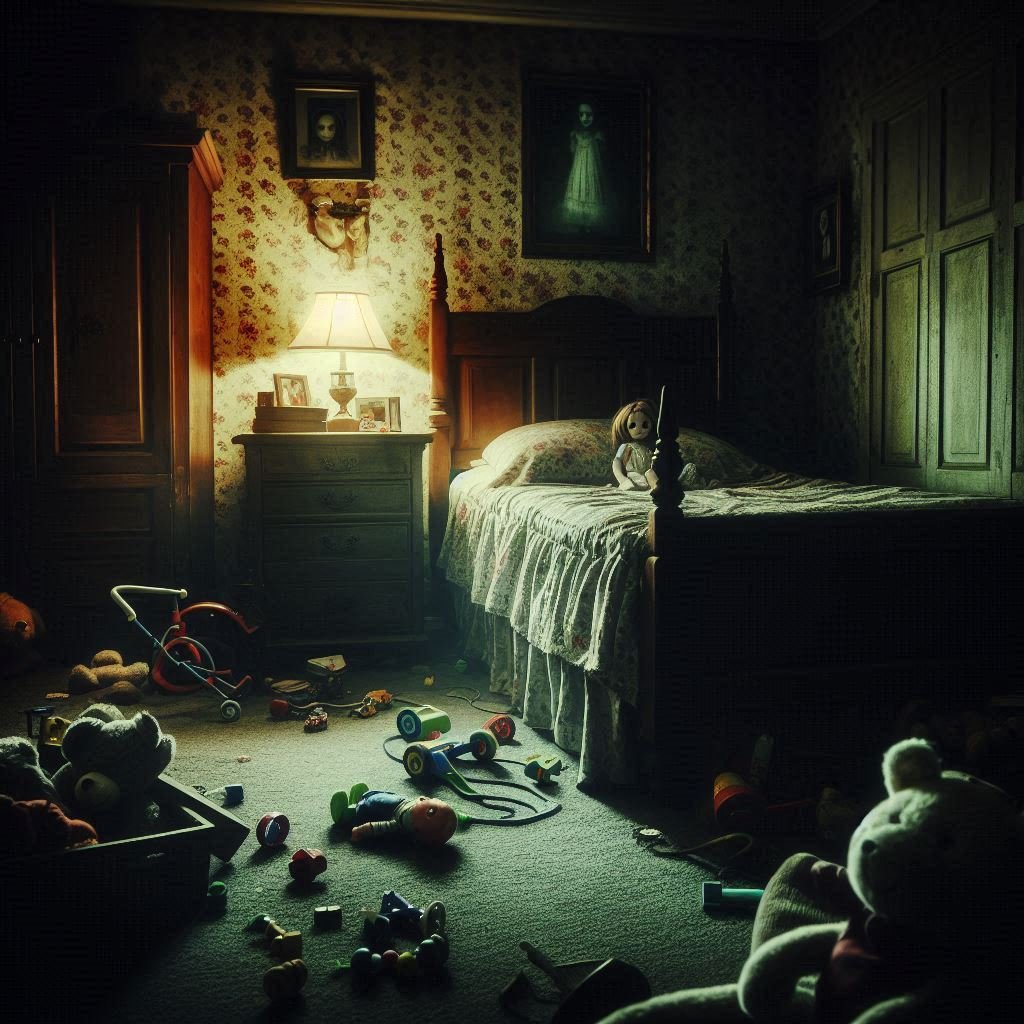Ghost Hoaxes: The Truth Behind Paranormal Deception
Introduction
For centuries, ghost stories have fascinated and terrified people around the world. Tales of spectral apparitions, haunted houses, and lingering spirits have been passed down through generations, fueling a global belief in the paranormal. While some claim that ghosts are the spirits of the dead trying to communicate with the living, skeptics argue that most ghostly encounters are either psychological illusions, natural phenomena, or outright hoaxes.
Ghost hoaxes, in particular, have played a significant role in shaping public perception of the supernatural. Some were elaborate pranks designed for entertainment, while others were deliberate deceptions for financial gain, fame, or control over the gullible. In this article, we will explore some of the most notorious ghost hoaxes in history, analyze the so-called evidence, and debunk the myths surrounding these paranormal deceptions.
1. The Fox Sisters and the Birth of Spiritualism
The Claim
In 1848, Margaret and Kate Fox, two young sisters from Hydesville, New York, claimed they could communicate with the dead through mysterious knocking sounds, which they called “spirit raps.” Their older sister, Leah, saw an opportunity and promoted them as mediums, launching the Fox Sisters into fame and making them the central figures of the Spiritualist movement. This movement, which believed in the ability to communicate with the deceased, gained massive popularity in the mid-19th century.
The Evidence
- Séances and Spirit Raps:
The sisters held séances where they claimed to communicate with spirits. During these sessions, knocking sounds would occur in response to questions, seemingly providing answers from the “other side.” - Witness Testimonies:
Hundreds of people attended their demonstrations, including prominent figures of the time. Many were convinced by the eerie, unexplained tapping noises, which appeared to be intelligent responses to questions. - Cultural Impact:
The Fox Sisters’ fame sparked a nationwide craze for séances, mediumship, and Spiritualism. Their claims inspired countless others to declare themselves mediums, and the movement grew into a significant cultural and religious phenomenon.
The Debunking
- Margaret Fox’s Confession (1888):
After decades of fame, Margaret Fox publicly admitted that the entire act was a hoax. In a dramatic demonstration, she showed how she and her sisters produced the “spirit raps” by cracking their toe joints against wooden surfaces or other objects. This simple physical trick created the illusion of mysterious knocking sounds. - Scientific Investigations:
Researchers and skeptics examined the phenomenon and found that the sounds could be easily replicated without any supernatural explanation. The “raps” were consistent with the sounds produced by manipulating joints or tapping objects discreetly. - Recanting the Confession:
Interestingly, the sisters later recanted their confession, possibly due to financial pressures or the influence of Spiritualist supporters. However, the damage to their credibility was already done, and their admission of fraud cast a long shadow over their legacy. - Legacy of Skepticism:
The Fox Sisters’ story became a cornerstone in the study of paranormal fraud and the psychology of belief. Their case highlighted how easily people can be convinced of supernatural phenomena, especially when fueled by emotion, desire, and the power of suggestion.
Fact-Checking
2. The Cottingley Fairies
The Claim
In 1917, two young cousins, Elsie Wright (16) and Frances Griffiths (10), from Cottingley, England, claimed to have photographed real fairies in their garden. The five photographs they produced became a sensation, with many people, including prominent figures like Sir Arthur Conan Doyle, believing they were genuine evidence of supernatural beings. The images sparked a global fascination with the possibility of fairies and the paranormal.
The Evidence:
- The Photographs:
The girls produced five photographs over several years, showing small, winged fairy-like figures interacting with them in the countryside. The images appeared to depict the fairies dancing, playing, and even posing with Frances and Elsie. - Support from Sir Arthur Conan Doyle:
The creator of Sherlock Holmes, a staunch Spiritualist, was captivated by the photos. He wrote articles defending their authenticity and even included them in his 1922 book, The Coming of the Fairies. His endorsement lent significant credibility to the claim. - Lack of Immediate Proof of Fraud:
At the time, photographic experts examined the images and could not definitively prove they were fake. The technology of the era made it difficult to detect subtle manipulations, and the girls’ insistence on their authenticity further convinced many. - Public Fascination:
The photos tapped into a post-World War I cultural longing for magic and wonder, making them a global phenomenon. Many people wanted to believe in the existence of fairies, and the images became a symbol of hope and enchantment.
The Debunking:
- Confession in the 1980s:
Decades later, in the 1980s, Elsie and Frances finally admitted that the photographs were staged. They revealed that they had used cardboard cutouts of fairies from a popular children’s book, Princess Mary’s Gift Book, and secured them with hat pins to create the illusion of interaction. - Modern Photo Analysis:
Advances in photographic technology allowed experts to analyze the images more thoroughly. They confirmed that the fairy figures were two-dimensional and lacked the depth, movement, and shadows that would be present if they were real, three-dimensional beings. - Frances’s Mixed Testimony:
While both women admitted the photos were faked, Frances maintained that she had genuinely seen fairies in the garden, even though the images themselves were staged. This added a layer of mystery to the story, as it suggested that the girls may have believed in fairies even as they fabricated evidence. - Motivation Behind the Hoax:
The girls initially created the photos as a prank to entertain themselves and their families. However, when the images gained widespread attention, they felt pressured to maintain the deception, especially after receiving support from influential figures like Conan Doyle.
Fact-Checking
3. The Amityville Horror
The Claim
In 1975, the Lutz family—George, Kathy, and their three children—moved into a house in Amityville, New York. The house had a dark history: just a year earlier, a man named Ronald DeFeo Jr. had murdered his entire family there in a gruesome mass shooting. Shortly after moving in, the Lutzes claimed they began experiencing terrifying paranormal activity, including strange noises, moving objects, foul odors, and even demonic forces. They fled the house after just 28 days, and their story became the basis for the infamous Amityville Horror.
The Evidence:
- The Lutz Family’s Testimony:
George and Kathy Lutz described a series of horrifying events, such as:- Doors slamming on their own.
- Green slime oozing from the walls.
- Kathy being levitated off her bed.
- George waking up at 3:15 a.m. every night (the time of the DeFeo murders).
- A demonic pig-like creature appearing in the house.
- The Book and Movies:
Their story was turned into a best-selling book in 1977, The Amityville Horror, which was later adapted into a Hollywood movie in 1979. The book and film franchise became hugely popular, cementing the story in pop culture as one of the most famous “haunted house” tales. - The Warrens’ Involvement:
Paranormal investigators Ed and Lorraine Warren (known for their work on other cases like the Conjuring) visited the house and declared it genuinely haunted. Their endorsement added credibility to the story, as they were seen as experts in the field of the supernatural.
The Debunking:
- The Lutz Family’s Admission:
Over time, the Lutz family admitted that much of their story was exaggerated or entirely made up. They confessed that they had embellished the details to make the story more dramatic and marketable. - No Scientific Evidence:
Investigators and skeptics examined the house and found no proof of paranormal activity. Many of the events described by the Lutzes could be explained by natural causes, such as drafts causing doors to slam or the house settling, which can create strange noises. - The Lawyer’s Confession:
The Lutzes’ original lawyer, William Weber, later revealed that the story was largely fabricated. He admitted that he, George, and Kathy had come up with the idea over “many bottles of wine” as a way to make money. Weber had represented Ronald DeFeo Jr. and saw the Lutz story as an opportunity to profit from the house’s dark history. - Media Hype and Public Gullibility:
The Amityville Horror story gained traction because it tapped into people’s fascination with the supernatural and true crime. The combination of a real-life tragedy and the Lutzes’ chilling tale made it easy for the public to believe, even though much of it was fiction.
Fact-Checking
4. The Enfield Poltergeist
The Claim
In the late 1970s, the Hodgson family in Enfield, England, claimed their house was haunted by a poltergeist. They reported terrifying events, such as furniture moving on its own, objects being thrown across rooms, children levitating, and eerie voices speaking in a deep, gravelly tone. The case became one of the most famous poltergeist stories in history and inspired the movie The Conjuring 2.
The Evidence:
- Eyewitness Accounts:
Several people, including journalists, police officers, and paranormal investigators, visited the house and claimed to witness strange phenomena. For example:- Chairs sliding across the floor.
- Toys and objects flying through the air.
- Knocking and banging sounds with no apparent source.
- Audio Recordings:
Investigators captured recordings of a deep, raspy voice claiming to be the spirit of an old man who had died in the house. This voice, often coming from 11-year-old Janet Hodgson, became one of the most chilling aspects of the case. - Media Attention:
The story gained widespread attention in the British press, with headlines about the “Enfield Poltergeist” captivating the public. The case was later studied by paranormal researchers, including Maurice Grosse and Guy Lyon Playfair, who believed the events were genuine. - Inspiration for The Conjuring 2:
The Enfield Poltergeist became so famous that it inspired the 2016 horror movie The Conjuring 2, which dramatized the events and brought the story to a new generation.
The Debunking:
- Children Caught Faking:
Video footage and eyewitness accounts revealed that the Hodgson children, particularly Janet, were caught faking some of the phenomena. For example:- Janet was seen bending spoons herself and throwing objects when she thought no one was watching.
- Investigators noted that many of the “paranormal” events only happened when the children were present.
- The “Spirit Voice”:
Experts analyzed the eerie voice recordings and concluded that they could have been produced through vocal tricks. Janet, who was often the source of the voice, admitted later in life that she had faked some of the voices but maintained that other events were real. - Skeptics’ Perspective:
Many skeptics argue that the entire case was an elaborate prank orchestrated by the children for attention. The family was struggling financially, and the media attention brought them both fame and monetary support. - Psychological Explanations:
Some researchers suggest that the events could be explained by psychological factors, such as stress or mass hysteria, rather than supernatural forces. Poltergeist cases are often linked to the presence of adolescents, and some believe the phenomena could be a manifestation of repressed emotions or trauma.
Fact-Checking
Conclusion
Ghost hoaxes have played a significant role in shaping the modern paranormal landscape. From Victorian-era séances to Hollywood-inspired haunted house tales, many of these stories have been debunked as tricks, exaggerations, or outright fabrications. While belief in ghosts persists, critical thinking and scientific inquiry remain essential tools in separating fact from fiction.
The next time you hear a ghost story or see a viral paranormal video, ask yourself: Is there concrete evidence, or could it be another elaborate hoax? In a world filled with mystery, a little skepticism can go a long way.

